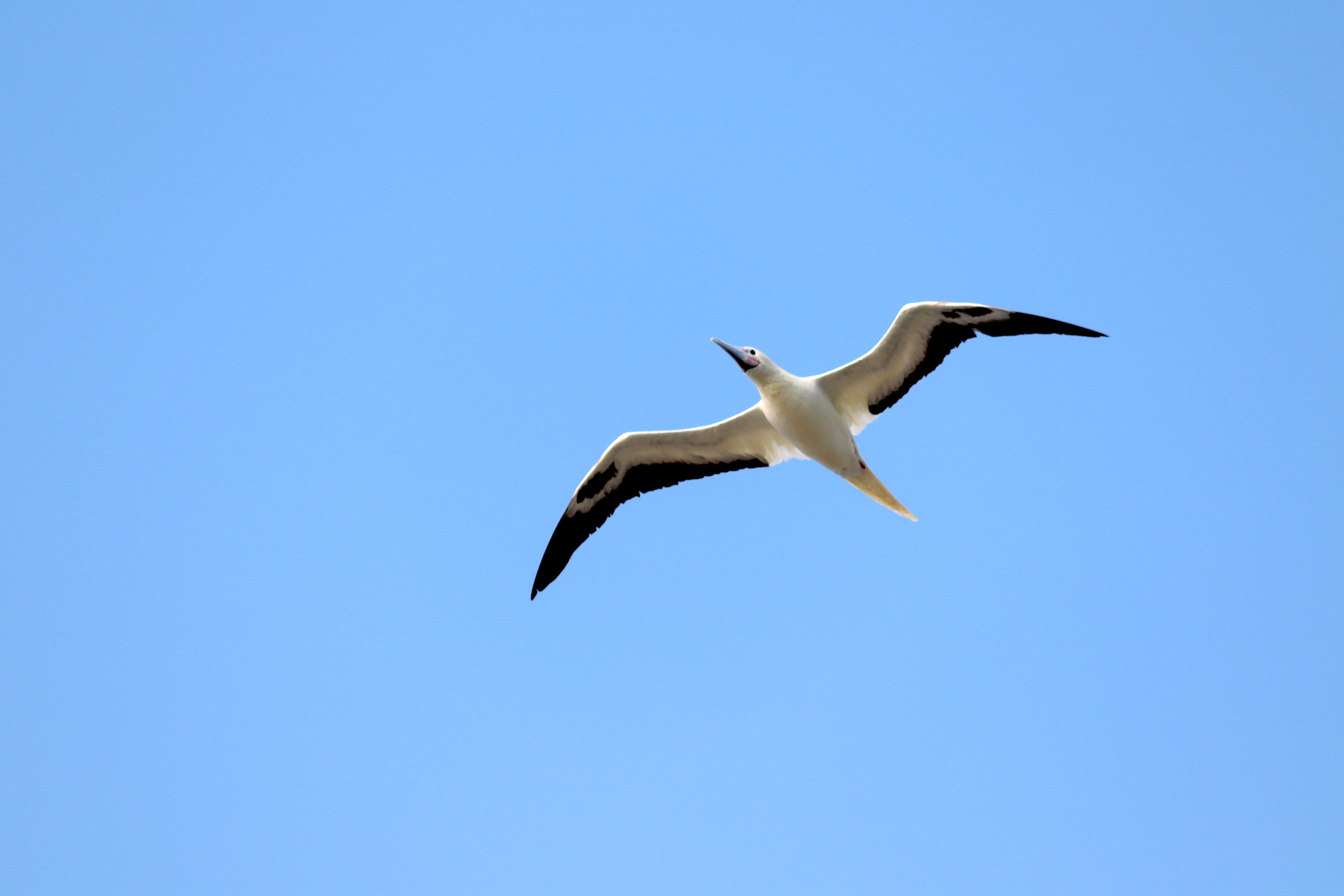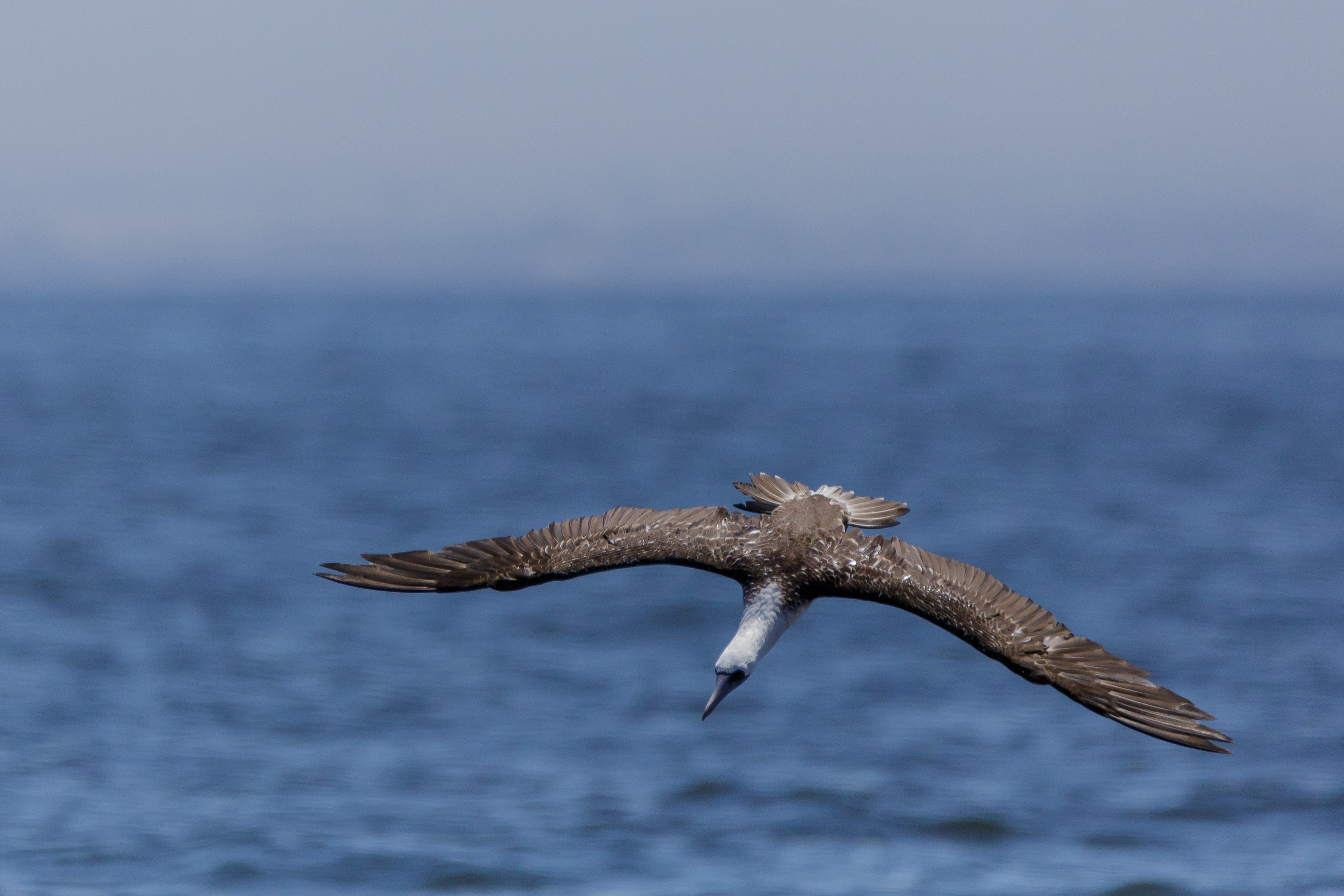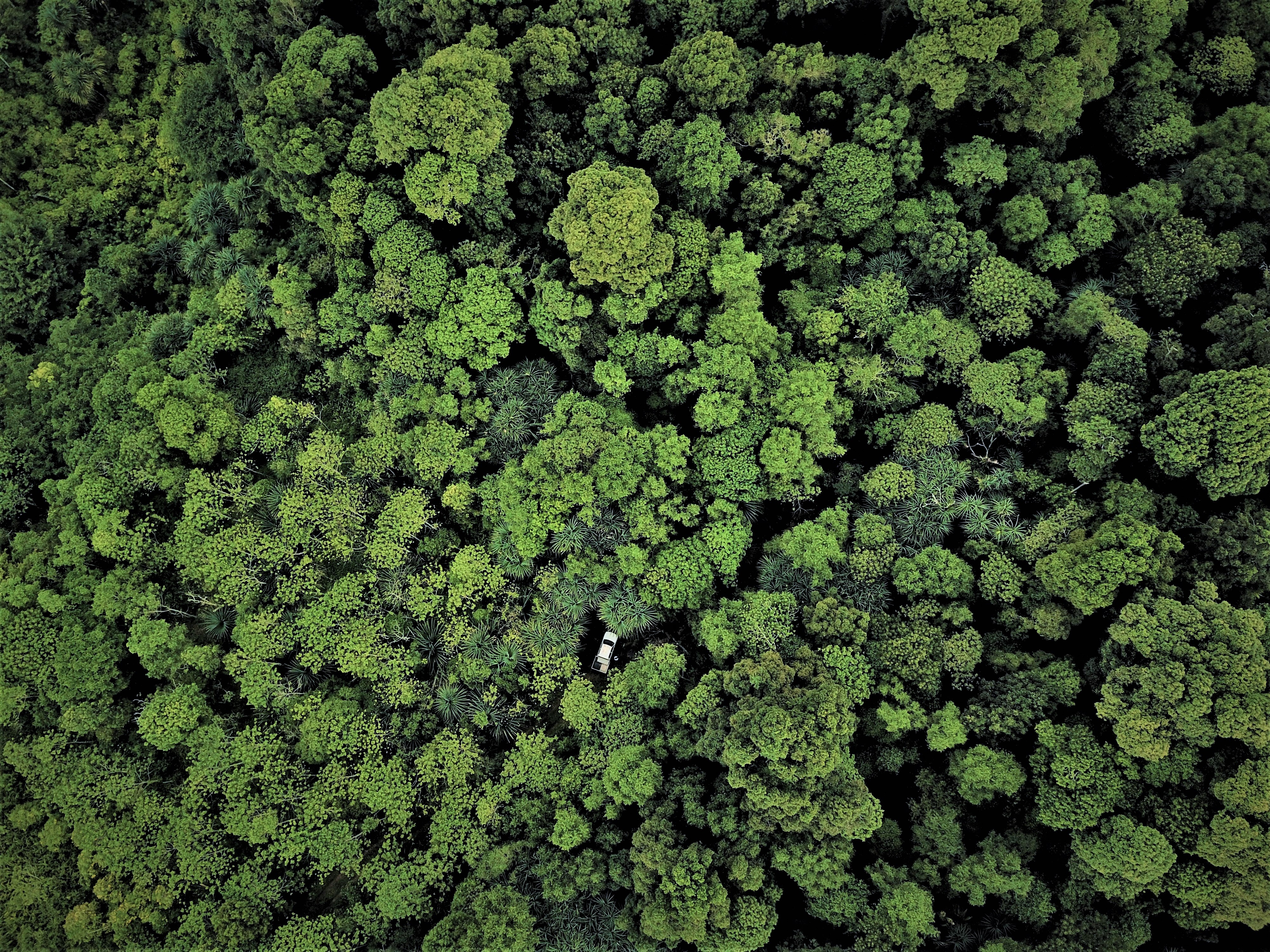|
Booby
A booby is a seabird in the genus ''Sula'', part of the family Sulidae. Boobies are closely related to the gannets (''Morus''), which were formerly included in ''Sula''. Systematics and evolution The genus ''Sula'' was introduced by the French zoologist Mathurin Jacques Brisson in 1760. The type species is the brown booby. The name is derived from ''súla'', the Old Norse and Icelandic word for the other member of the family Sulidae, the gannet. The English name "booby" was possibly based on the Spanish slang term ''bobo'', meaning "stupid", as these tame birds had a habit of landing on board sailing ships, where they were easily captured and eaten. Owing to this, boobies are often mentioned as having been caught and eaten by shipwrecked sailors, notably William Bligh of the ''Bounty'' and his adherents during their famous voyage after being set adrift by Fletcher Christian and his followers. Six of the ten extant Sulidae species called ''boobies'' are in the genus ''Sul ... [...More Info...] [...Related Items...] OR: [Wikipedia] [Google] [Baidu] |
Masked Booby
The masked booby (''Sula dactylatra''), also called the masked gannet or the blue-faced booby, is a large seabird of the booby and gannet family, Sulidae. First described by the French naturalist René-Primevère Lesson in 1831, the masked booby is one of six species of booby in the genus '' Sula''. It has a typical sulid body shape, with a long pointed yellowish bill, long neck, aerodynamic body, long slender wings and pointed tail. The adult is bright white with black wings, a black tail and a dark face mask; at long, it is the largest species of booby. The sexes have similar plumage. This species ranges across tropical oceans, except in the eastern Atlantic and eastern Pacific. In the latter, it is replaced by the Nazca booby (''Sula granti''), which was formerly regarded as a subspecies of masked booby. Nesting takes place in colonies, generally on islands and atolls far from the mainland and close to deep water required for foraging. Territorial when breeding, the masked ... [...More Info...] [...Related Items...] OR: [Wikipedia] [Google] [Baidu] |
Blue-footed Booby
The blue-footed booby (''Sula nebouxii'') is a marine bird native to subtropical and tropical regions of the eastern Pacific Ocean. It is one of six species of the genus '' Sula'' – known as boobies. It is easily recognizable by its distinctive bright blue feet, which is a sexually selected trait and a product of their diet. Males display their feet in an elaborate mating ritual by lifting them up and down while strutting before the female. The female is slightly larger than the male and can measure up to long with a wingspan up to . The natural breeding habitats of the blue-footed booby are the tropical and subtropical islands of the Pacific Ocean. It can be found from the Gulf of California south along the western coasts of Central and South America to Peru. About half of all breeding pairs nest on the Galápagos Islands. Its diet mainly consists of fish, which it obtains by diving and sometimes swimming under water in search of its prey. It sometimes hunts alone, but u ... [...More Info...] [...Related Items...] OR: [Wikipedia] [Google] [Baidu] |
Sulidae
The bird family Sulidae comprises the gannets and boobies. Collectively called sulids, they are medium-large coastal seabirds that plunge-dive for fish and similar prey. The 10 species in this family are often considered congeneric in older sources, placing all in the genus ''Sula''. However, ''Sula'' (true boobies) and ''Morus'' (gannets) can be readily distinguished by morphological, behavioral, and DNA sequence characters. Abbott's booby (''Papasula'') is given its own genus, as it stands apart from both in these respects. It appears to be a distinct and ancient lineage, maybe closer to the gannets than to the true boobies.Kennedy, Martyn; Spencer, Hamish G. & Gray, Russell D. (1996): Hop, step and gape: do the social displays of the Pelecaniformes reflect phylogeny? ''Animal Behaviour'' 51(2): 273-291. (HTML abstract) Erratum: ''Animal Behaviour'' 51(5): 1197. Description Sulids measure about in length and have a wingspan around . They have long, narrow, and pointed w ... [...More Info...] [...Related Items...] OR: [Wikipedia] [Google] [Baidu] |
Red-footed Booby
The red-footed booby (''Sula sula'') is a large seabird of the booby family, Sulidae. Adults always have red feet, but the colour of the plumage varies. They are powerful and agile fliers, but they are clumsy in takeoffs and landings. They are found widely in the tropics, and breed colonially in coastal regions, especially islands. The species faces few natural or man-made threats, although its population is declining; it is considered to be a least-concern species by the International Union for Conservation of Nature (IUCN). Taxonomy The first formal description of the red-footed booby was by the Swedish naturalist Carl Linnaeus in 1766 in the twelfth edition of his ''Systema Naturae''. He introduced the binomial name ''Pelecanus sula''. The type locality is Barbados in the West Indies. The present genus ''Sula'' was introduced by the French scientist Mathurin Jacques Brisson in 1760. The word ''Sula'' is Norwegian for a gannet. There are three subspecies: * ''S. s. sula'' ... [...More Info...] [...Related Items...] OR: [Wikipedia] [Google] [Baidu] |
Peruvian Booby
The Peruvian booby (''Sula variegata'') is an endemic bird of the Peruvian current, and an important predator of the marine community to which it belongs. Its distribution is much less widespread than other closely related booby species. It is the most abundant seabird species that inhabits the Peruvian coast and the second most important guano-producing seabird. During the mid-twentieth century, the Peruvian booby population reached 3 million birds. Description The Peruvian booby has brown upperparts, and white underparts, as well as a white head. There is noticeable white mottling on the upper side of the wings. Their wing-coverts are tipped white, creating a scale-like pattern. They have a long, pointed, grey bill. Their feet are webbed and also grey; as opposed to the characteristic colouring of the blue-footed and red-footed boobiesNeotropical Birds Online (T. S. Schulenberg, Editor) (2010). Peruvian Booby (''Sula variegata''). Ithaca: Cornell Lab of Ornithology; retrieved ... [...More Info...] [...Related Items...] OR: [Wikipedia] [Google] [Baidu] |
Abbott's Booby
Abbott's booby (''Papasula abbotti'') is an endangered seabird of the sulid family, which includes gannets and boobies. It is a large booby and is placed within its own monotypic genus. It was first identified from a specimen collected by William Louis Abbott, who discovered it on Assumption Island in 1892. Abbott's booby breeds only in a few spots on the Australian territory of Christmas Island in the eastern Indian Ocean, although it formerly had a much wider range. It has white plumage with black markings, and is adapted for long-distance flight. It forages around Christmas Island, often around nutrient-rich oceanic upwellings, although individuals can travel for thousands of kilometres. Pairs mate for life and raise one chick every two or three years, nesting near the top of emergent trees in the rainforest canopy. The population is decreasing. Historically, much of its former habitat was logged to make way for phosphate mining. Some logging continues, and the effects of t ... [...More Info...] [...Related Items...] OR: [Wikipedia] [Google] [Baidu] |
Brown Booby
The brown booby (''Sula leucogaster'') is a large seabird of the booby family Sulidae, of which it is perhaps the most common and widespread species. It has a pantropical range, which overlaps with that of other booby species. The gregarious brown booby commutes and forages at low height over inshore waters. Flocks plunge-dive to take small fish, especially when these are driven near the surface by their predators. They only nest on the ground, and roost on solid objects rather than the water surface. Taxonomy The brown booby was described by the French polymath Georges-Louis Leclerc, Comte de Buffon in his ''Histoire Naturelle des Oiseaux'' in 1781. The bird was also illustrated in a hand-coloured plate engraved by François-Nicolas Martinet in the ''Planches Enluminées D'Histoire Naturelle'' which was produced under the supervision of Edme-Louis Daubenton to accompany Buffon's text. Buffon did not include a scientific name with his description but in 1783 the Dutch naturalist ... [...More Info...] [...Related Items...] OR: [Wikipedia] [Google] [Baidu] |
Brown Booby
The brown booby (''Sula leucogaster'') is a large seabird of the booby family Sulidae, of which it is perhaps the most common and widespread species. It has a pantropical range, which overlaps with that of other booby species. The gregarious brown booby commutes and forages at low height over inshore waters. Flocks plunge-dive to take small fish, especially when these are driven near the surface by their predators. They only nest on the ground, and roost on solid objects rather than the water surface. Taxonomy The brown booby was described by the French polymath Georges-Louis Leclerc, Comte de Buffon in his ''Histoire Naturelle des Oiseaux'' in 1781. The bird was also illustrated in a hand-coloured plate engraved by François-Nicolas Martinet in the ''Planches Enluminées D'Histoire Naturelle'' which was produced under the supervision of Edme-Louis Daubenton to accompany Buffon's text. Buffon did not include a scientific name with his description but in 1783 the Dutch naturalist ... [...More Info...] [...Related Items...] OR: [Wikipedia] [Google] [Baidu] |
Nazca Booby
The Nazca booby (''Sula granti'') is a large seabird of the booby family, Sulidae, native to the eastern Pacific. First described by Walter Rothschild, 2nd Baron Rothschild, Walter Rothschild in 1902, it was long considered a subspecies of the masked booby until recognised as distinct genetically and behaviorally in 2002. It has a typical sulid body shape, with a long pointed orange-yellow bill, long neck, aerodynamic body, long slender wings and pointed tail. The adult is bright white with black and white wings, a black tail and a dark face mask. Taxonomy Walter Rothschild, 2nd Baron Rothschild, Walter Rothschild organised and sent an expedition to the Galapagos Islands in 1897 to collect and review the animal life there. He wrote of a distinctive booby there, which he and William Robert Ogilvie-Grant diagnosed as the Peruvian booby (''Sula variegata''), then only known from juvenile plumage. Later, in 1902, Rothschild named it a new species, ''Sula granti''. Rothschild later re ... [...More Info...] [...Related Items...] OR: [Wikipedia] [Google] [Baidu] |
Seabird
Seabirds (also known as marine birds) are birds that are adapted to life within the marine environment. While seabirds vary greatly in lifestyle, behaviour and physiology, they often exhibit striking convergent evolution, as the same environmental problems and feeding niches have resulted in similar adaptations. The first seabirds evolved in the Cretaceous period, and modern seabird families emerged in the Paleogene. In general, seabirds live longer, breed later and have fewer young than other birds do, but they invest a great deal of time in their young. Most species nest in colonies, which can vary in size from a few dozen birds to millions. Many species are famous for undertaking long annual migrations, crossing the equator or circumnavigating the Earth in some cases. They feed both at the ocean's surface and below it, and even feed on each other. Seabirds can be highly pelagic, coastal, or in some cases spend a part of the year away from the sea entirely. Seabirds and ... [...More Info...] [...Related Items...] OR: [Wikipedia] [Google] [Baidu] |
Gannet
Gannets are seabirds comprising the genus ''Morus'' in the family Sulidae, closely related to boobies. Gannets are large white birds with yellowish heads; black-tipped wings; and long bills. Northern gannets are the largest seabirds in the North Atlantic, having a wingspan of up to . The other two species occur in the temperate seas around southern Africa, southern Australia, and New Zealand. Etymology "Gannet" is derived from Old English ''ganot'' meaning "strong or masculine", ultimately from the same Old Germanic root as "gander". Taxonomy ''Morus'' is derived from Ancient Greek ''moros'' "stupid" or "foolish" due to lack of fear shown by breeding gannets and boobies, allowing them to be easily killed. Behaviour Hunting Gannets hunt fish by diving into the sea from a height of and pursuing their prey underwater, and have a number of adaptations: * They have no external nostrils; they are located inside the mouth, instead. * They have air sacs in the face and ch ... [...More Info...] [...Related Items...] OR: [Wikipedia] [Google] [Baidu] |
Gannet
Gannets are seabirds comprising the genus ''Morus'' in the family Sulidae, closely related to boobies. Gannets are large white birds with yellowish heads; black-tipped wings; and long bills. Northern gannets are the largest seabirds in the North Atlantic, having a wingspan of up to . The other two species occur in the temperate seas around southern Africa, southern Australia, and New Zealand. Etymology "Gannet" is derived from Old English ''ganot'' meaning "strong or masculine", ultimately from the same Old Germanic root as "gander". Taxonomy ''Morus'' is derived from Ancient Greek ''moros'' "stupid" or "foolish" due to lack of fear shown by breeding gannets and boobies, allowing them to be easily killed. Behaviour Hunting Gannets hunt fish by diving into the sea from a height of and pursuing their prey underwater, and have a number of adaptations: * They have no external nostrils; they are located inside the mouth, instead. * They have air sacs in the face and ch ... [...More Info...] [...Related Items...] OR: [Wikipedia] [Google] [Baidu] |
_world2.png)






